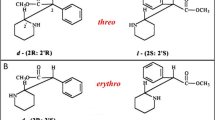Abstract.
Background:
Pramipexole is a nonergoline dopamine agonist with D2 and preferential D3 dopamine receptor activity. This selective activity may result in clinically different effects. Small clinical trials indicate that overnight switching from one agonist to another can be performed safely. Objective To determine safety and efficacy of overnight switching from dopamine agonists to pramipexole in patients with advanced Parkinson’s disease (PD).
Objective:
To determine safety and efficacy of overnight switching from dopamine agonists to pramipexole in patients with advanced Parkinson’s disease (PD).
Methods:
Patients with advanced PD and motor complications not optimally controlled by levodopa and a stable dose of bromocriptine, pergolide or ropinirole were converted to pramipexole overnight. Clinical assessments were performed just prior to conversion and after 2, 6 and 12 weeks of treatment, when an optimal dose of pramipexole was achieved.
Results:
Two hundred and seventeen patients were included in the trial. One hundred and twenty five were converted from pergolide to pramipexole, 58 from bromocriptine and 34 from ropinirole. After 12 weeks, the average dose of pramipexole was 2.8, 2.9 and 3.4 mg/d in patients converted from bromocriptine, pergolide, and ropinirole, respectively. UPDRS II, III and IV scores were reduced by 26–30 % in all patients (p < 0.0001). Mean levodopa dose was slightly reduced in all groups (p: NS). No serious or unexpected side effects were reported. The dose equivalences calculated from this trial were: bromocriptine: pramipexole 6.9:1, pergolide: pramipexole 0.9:1, ropinirole: pramipexole 1.5:1.
Conclusion:
Switching from bromocriptine, pergolide or ropinirole to pramipexole in an overnight schedule is safe. The observed clinical improvement may be related to a placebo effect, to the use of low doses of dopamine agonists or to a direct effect of pramipexole.
Similar content being viewed by others
Author information
Authors and Affiliations
Consortia
Corresponding author
Rights and permissions
About this article
Cite this article
Linazasoro, G., on behalf of the Spanish Dopamine Agonists Study Group. Conversion from dopamine agonists to pramipexole. J Neurol 251, 335–339 (2004). https://doi.org/10.1007/s00415-004-0328-0
Received:
Revised:
Accepted:
Issue Date:
DOI: https://doi.org/10.1007/s00415-004-0328-0



